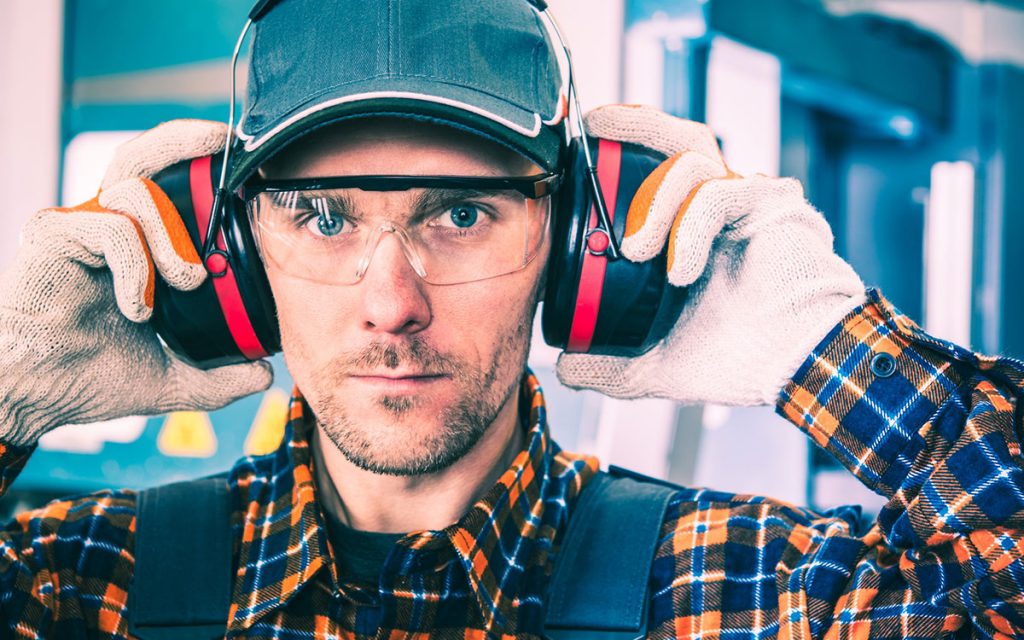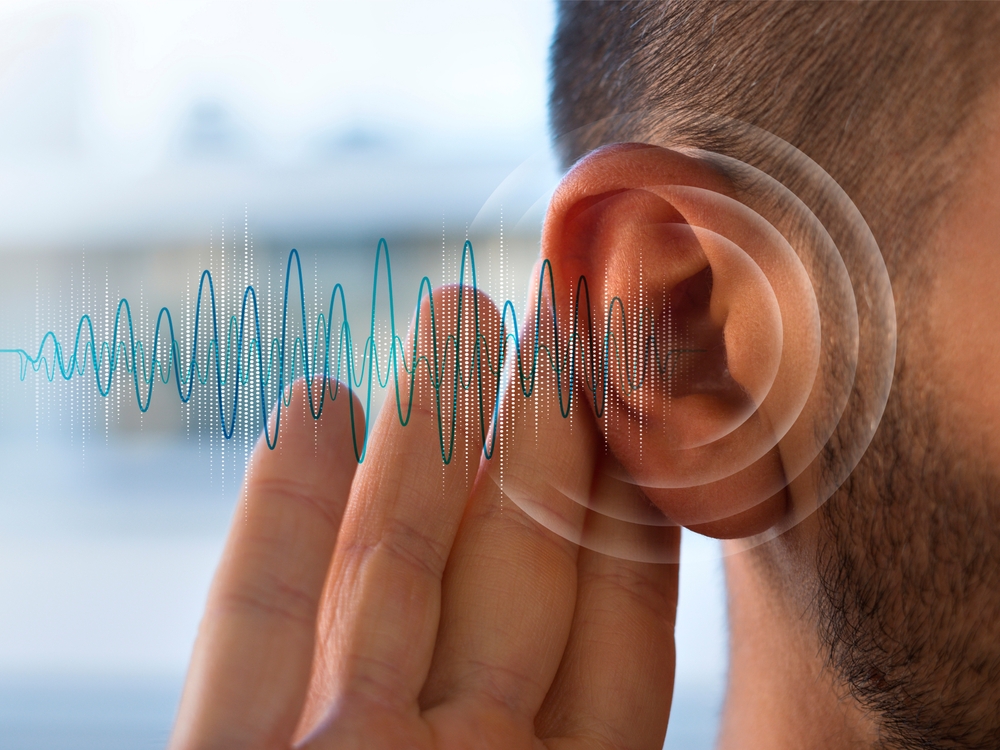Modern earmuffs with Bluetooth connectivity are improving safety on noisy job sites while simultaneously diminishing the need for workers to double up on hearing protection. With these new models, there is no need to also wear earplugs, though it may be required for intensely noisy environments.
There are times in our lives when we know it’s going to be loud— really loud. It may be at work. It may be at home, or at play. This knowledge gives us the opportunity to plan ahead. We can protect ourselves from permanent hearing loss by taking precautions.
You may be asking though: Are earplugs or earmuffs by themselves enough? Do you need more protection? Or is there a point at which the added hearing protection is negligible?
Do earmuffs block out sound?
Earmuffs are similar to the older-style headphones (that are now back in fashion). They completely cover the ears and can be fitted with noise-canceling technology. There are different earmuff types and sizes, for different purposes. If equipped with noise-canceling technology they will either use electronics to block sound or muffle them. Some are quite effective at silencing background sound. Often, though, if you work in an environment where you need earmuffs, you may have a pair that allow you to communicate electronically with your coworkers.
Protecting your hearing with earplugs & earmuffs
If you work in a noisy facility, you’re rarely exposed to ear-damaging sound regularly. There are usually specific rooms that are louder than others, or events that can cause the noise level to increase for a short time. A jackhammer, bead blaster, or arc welder would make this level of noise. In these cases, noise can exceed 100 decibels (dB).
OSHA (Occupational Safety and Health) has rules in place to protect workers in this setting. A person can only be exposed to 90 dB for 8 hours. For every 5 dB, the sound goes up, the time allowed in that space gets cut in half.
Employers must test the noise levels to be confident they’re compliant.
The Mine Safety and Health Administration (MSHA) requires that employees use dual protection when exposed to 105 dB for greater than 8 hours.
Though these rules do protect workers, they still permit exposure to damaging noise levels. Damage begins at just 85 dB. Many employees are in job roles where they experience this level of noise, and their employer should provide extra protection with earplugs or earmuffs or both.
How dual-protection impacts employee safety overall
Balancing hearing protection and overall safety is paramount.
There is also concern that dual protection may increase accident risk. This fear is a common concern among pilots, police, and soldiers but can be equally troubling for those in a construction or manufacturing setting. If sounds are blocked, these workers may not be able to hear well enough to avoid danger.
People wearing double protection may experience:
- Tuning out — A state in which the mind drifts from what they’re doing because their hearing isn’t engaged
- Relaxation — Being overly relaxed in some work environments can be dangerous.
- Hyper-awareness — When we lose a sense, even temporarily, this can lead to over-compensation by the other senses. Some people experience dizziness and exhaustion as a result or an increase in stress.
- Hyper-alertness — Loss of a sense can lead to an odd or impulsive reaction as the person is on constant high alert. This alertness can be channeled into an asset or it can become a liability.
- Falling asleep — For a hearing person, not hearing can cause drowsiness. The person could accidentally fall asleep if they’re not moving.
Employers must balance these risks with hearing protection. They can do this by providing training for those working in a soundless environment. They can additionally put visual cues and communication methods in place to help their employees stay safe. Finally, they can provide training on how to wear dual protection. Misuse these devices even over a short period of time can lead to permanent hearing loss.
Because an employer must weigh the risks versus the benefits, there are times when dual protection would be overkill. Because of this, OSHA doesn’t mandate dual protection. Employers should also consider newer earmuffs, which allow workers to communicate.
New earmuff technologies
Several novel developments in earmuff technologies have been introduced that can help employers and employees mitigate some of the possible and perceived safety drawbacks associated with hearing protection.
Earmuffs that address these safety tradeoff concerns are an important step in securing wide adoption of hearing protection policies. Employees and employers alike do not want to feel as though taking steps to protect their hearing will minimize their performance or their safety. New earmuff technologies are designed to minimize any such possible tradeoffs.
Communication and hearing protection
Some of the most recent earmuff innovations include improvements designed to make it easier for workers to communicate while wearing hearing protection.:
- Bluetooth earmuffs: One of the common complaints about hearing protection is that it tends to isolate workers from the outside world. Alarms, alerts, and ringtones are impossible to hear, and, in theory, this could endanger employees.
- Bluetooth-enabled earmuffs allow workers to stay connected to smartphones or other Bluetooth-enabled devices, ensuring that employees can stay connected to the outside world and do not fall prey to feelings of isolation. Earmuffs with Bluetooth can also ensure that workers are able to effectively communicate with one another.
- Earmuffs with built-in radio communication are an effective way to ensure that workers can clearly communicate with each other and protect their hearing at the same time. These devices will usually incorporate speakers embedded directly into the hearing protection as well as a built-in microphone–meaning the system is both complete and enclosed. Earmuffs with speakers and microphones mean workers can complete essential communications without sacrificing their hearing protection and without risking damage to their hearing.
Improved performance of hearing protection beyond earmuffs
Some technology improvements go beyond earmuffs with Bluetooth or earmuffs with speakers and microphones:
- Integrated technologies: Many noisy workplaces have multiple hazards, so hearing protection might not be the only kind of safety equipment employers need to consider. That’s why earmuff manufacturers have worked diligently to offer earmuffs that are intended to work as part of larger safety systems. For example, modern earmuffs with speakers and microphones working over radio will typically not interfere with respiration devices the way they used to. Earmuffs that more efficiently integrate with other safety equipment ensure wider usage among employees and employers.
- Noise cancellation: Ear protection of any kind can only physically block so much sound. That’s why noise cancellation technology is such a revolutionary advancement. The earmuffs detect the wavelength of the sound in the environment and then produce soundwaves of a similar wavelength, canceling out the original sound. Noise cancellation can often be calibrated to cancel out any sound over a certain dB level in order to ensure a safer working environment.
Does doubling up mean double protection?
Earplugs plus earmuffs together do provide more protection than one or the other alone. But is it double? In other words, do you get the full protection of the earplugs plus the full protection of the earmuffs?
You’ve probably heard the saying that “sometimes the total is greater than the sum of its parts.” This is not the case with dual protection.
Because of the conduction of sound through the bones, some sound bypasses the safeguards, making them less effective than they would otherwise be.
The frequency of the sound impacts how well doubling up provides extra protection. At a frequency of 2000 Hz, for example, the added protection becomes negligible. This means that dual protection will be necessary in only a rare set of instances. Some of those circumstances may even have more to do with ergonomics than hearing protection. The most advanced and innovative earmuffs, however, may eliminate the need for dual protection almost entirely.
When to consider extra protection
Ear protective devices receive an NRR rating. This means that they’ve been tested to withstand the number of decibels corresponding to their rating. A standard set of earplugs will be around 20 NRR (20 dB of protection).
If you have earplugs that protect you from 20 dB and hearing loss starts at 85 dB, you should be safe up to 105 dB (85+20). Protection goes down as frequency goes down so having more protection than seems called for is advisable in a low-frequency setting. You can purchase earplugs up to 36 NRR.
The highest level of protection that you can get from earmuffs is 31 dB.
It’s estimated that 97 percent of industrial work environments do not exceed 100 dB. This means that in the vast majority of work environments one or the other will provide ample protection. In the other 3 percent, dual protection is advised. Certain construction and manufacturing jobs, as well as, mining, quarrying, and air traffic control are among the occupations that need dual protection.
Dual protection may also be called for when:
- Riding a motorcycle — 100+ dB
- Flying in a plane — 120 dB (during take-off)
- At a shooting range — 140 – 190 dB
- At a concert — 100 to 120 dB
- During intense storms. Thunder can also pack a punch at 120 dB if it’s very close.
Do earmuffs with Bluetooth require dual-protection?
It should be noted that earmuffs with modern technology provide a significantly higher level of protection than their older counterparts and, to a certain extent, diminish the need for dual protection.
For example, one common reason that dual protection might be necessary is that you often remove your earmuffs to hear your co-workers communicate (having earplugs to protect your hearing during these intervals would be necessary and beneficial). Earmuffs with Bluetooth (or earmuffs with microphones and speakers of any kind) let workers keep their earmuffs on while communicating.
For workers using the latest and most up-to-date technologies, dual protection may no longer be necessary or preferred. Not only can the most modern earmuffs improve hearing protection, but they can also improve overall on-site safety and communication. However, it’s important to follow the best practices of your industry and workspace, as well as to periodically check in with a highly-qualified hearing professional.
Get your hearing checked annually and discuss hearing loss prevention options with a hearing specialist to best assess your situation.



